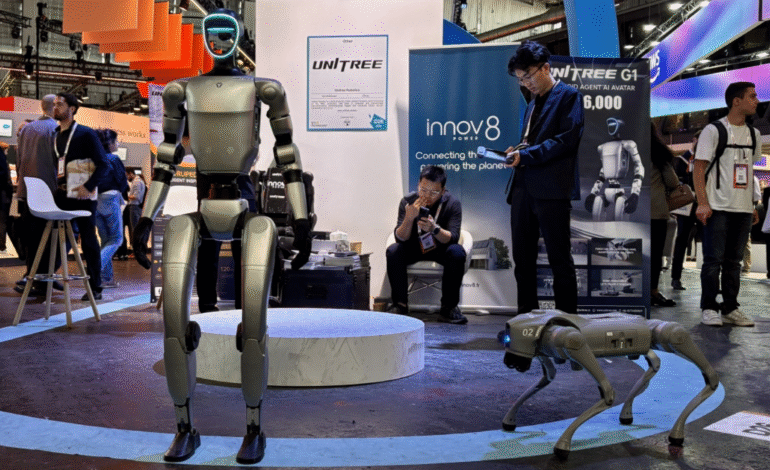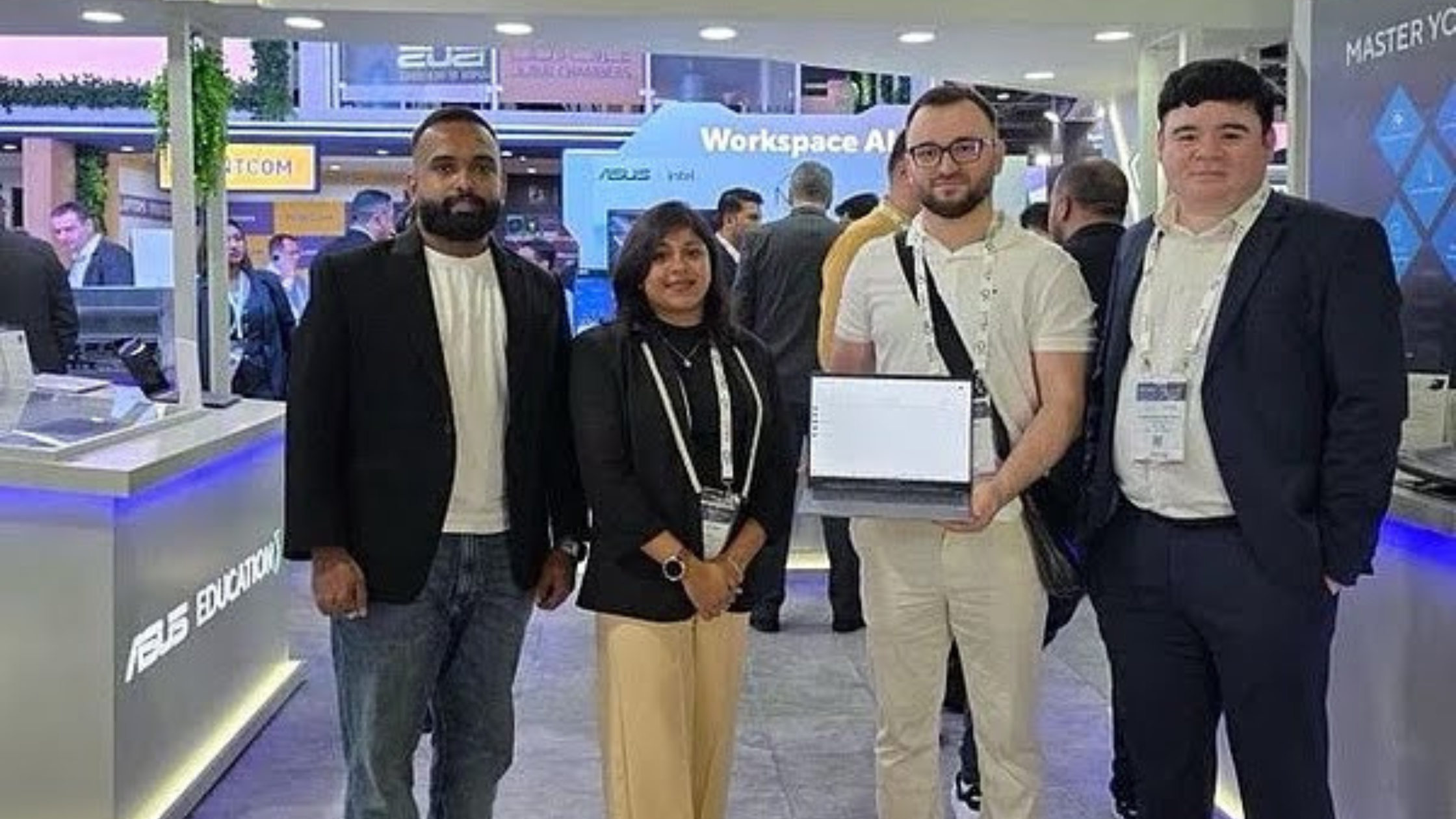China-Europe Tech Ties Deepen at Paris Innovation Event

The recent technology exhibition in Paris, a prominent global innovation forum, became a significant platform for showcasing emerging technologies and nurturing international partnerships. Central to the event was the visible collaboration between China and Europe, especially with a strong representation from France. These engagements underscored a commitment to scientific advancement, shared research, and technological diplomacy.
China’s presence was exemplified by the well-organized China Pavilion, designed not only to exhibit its latest innovations but also to foster bilateral and multilateral cooperation. This dedicated space brought together Chinese experts, researchers, and technologists to interact with their European counterparts, laying the groundwork for future collaborative ventures in various domains of science and engineering.
French officials and institutions also used the event to reaffirm their long-standing cooperation with China, referencing nearly 20 active joint laboratories across critical scientific fields such as diagnostics, particle physics, and plant biosafety. The event served as a mirror reflecting the global scientific community’s shared commitment to advancing knowledge and addressing challenges collectively.
Scientific Partnerships Based on Mutual Trust and Shared Goals
The tone of the Paris exhibition was notably optimistic and cooperative, demonstrating that science can transcend borders. Ambassador Deng Li, representing China, emphasized that the China Pavilion was “not only a window to China’s scientific and technological achievements but also a platform for exchange and cooperation.” His remarks captured the event’s collaborative spirit and the broader trend of international scientific diplomacy.
The 20 joint laboratories cited by officials serve as a clear indication of trust and sustained engagement between France and China. These include initiatives in medical diagnostics aimed at improving public health, research in particle physics that furthers our understanding of the universe, and plant biosafety programs essential for sustainable agriculture and global food security.
French and Chinese researchers shared insights into these collaborations, detailing how they have contributed to innovations that benefit communities on both sides. For example, research in diagnostics has led to new methods for early disease detection, while plant biosafety studies have enabled improved crop protection and environmental sustainability. These collaborations are proof of what shared expertise can achieve.
China Emphasizes Openness and Global Responsibility in Technology
Ambassador Deng’s address reiterated China’s vision for its role in the international tech landscape. According to him, China is determined to act as a “promoter of global technological progress, an advocate for open cooperation, and a builder of peaceful development.” These statements align with China’s broader approach to scientific diplomacy and its increasing participation in global research programs.
This commitment was not only verbal but also reflected in action. During the event, Chinese institutions launched new proposals for collaborative research, expressed interest in joint development of green technologies, and invited European researchers to participate in upcoming projects across sectors such as artificial intelligence, sustainable energy, and biotechnology.
By offering open avenues for cooperation and emphasizing mutual benefit, China presented itself as a willing partner in global innovation. The China Pavilion, thus, became more than an exhibition space—it evolved into a symbol of open science and shared aspirations.
France and China as Models of Scientific Engagement
France, with its strong scientific infrastructure and history of academic excellence, played a central role in setting the tone for the event. French research institutions, particularly the National Centre for Scientific Research (CNRS), have long maintained partnerships with Chinese institutions. These collaborations have spanned multiple decades and have produced a steady stream of academic publications, technology patents, and cross-border educational initiatives.
The French representatives made clear that these partnerships are not just symbolic. They are functional, dynamic, and productive. The continued development of joint laboratories, research exchanges, and innovation programs stands as evidence of France’s belief in the strength of cooperation.
These efforts also extend to areas such as climate research, sustainable development, and renewable energy—fields where French and Chinese scientists are working side-by-side. Their presence at the Paris exhibition showcased practical examples of how bilateral efforts can tackle global challenges more efficiently than isolated national projects.
Technology as a Bridge, Not a Battlefield
One of the most powerful messages to emerge from the event was the idea that technology should unify rather than divide. Despite global tensions and competitive dynamics in certain sectors, the atmosphere at the Paris exhibition was one of openness and collaboration. Scientists, entrepreneurs, and policymakers from various countries emphasized that innovation can only reach its full potential when knowledge is shared and partnerships are nurtured.
Sessions on emerging technologies like quantum computing, digital health, and smart energy demonstrated the necessity of global cooperation. These areas require vast pools of talent and resources, and the solutions developed have far-reaching implications across nations.
Workshops and panel discussions also explored the ethical dimensions of technology, encouraging dialogue on responsible innovation. This focus on ethical standards, transparency, and accountability further emphasized the shared responsibility among global players to harness technology for the collective good.
European Union’s Commitment to Collaborative Innovation
European representatives beyond France, including officials and institutions from Germany, the Netherlands, and Italy, also made significant contributions to the event’s success. They expressed alignment with France’s vision and praised China’s active role in supporting global scientific initiatives.
The EU’s Horizon research framework has already paved the way for deeper partnerships, allowing countries like China to participate in projects addressing climate change, digital transformation, and sustainable development. The participation of these European nations highlighted their dedication to open science and underscored the importance of standardized data systems, collaborative funding, and cross-border knowledge exchange.
Speakers from EU institutions emphasized that science plays a crucial role in diplomacy and peace-building, reinforcing the idea that research should remain apolitical and centered on human progress. Their presence and contributions at the event echoed a strong desire for continued engagement with partners around the world.
Youth Participation and Startups Signal a Promising Future
A particularly vibrant element of the Paris event was the active participation of youth and emerging startups from both China and Europe. Young scientists, university teams, and tech entrepreneurs showcased an exciting array of collaborative projects, reflecting a new generation’s readiness to work across borders and disciplines.
Startup pavilions presented innovations in clean energy, digital healthcare, and urban technology. A notable example was a joint French-Chinese project on real-time air quality monitoring, which combined engineering expertise with machine learning tools to assist city planners in managing urban pollution.
Educational institutions also took the opportunity to highlight dual-degree programs, student exchange initiatives, and research fellowships that foster cross-cultural learning. These programs are laying the foundation for long-term collaboration, encouraging tomorrow’s scientists to adopt a global outlook from the start of their careers.
Such youth-driven energy and creativity added a dynamic layer to the event, reinforcing the idea that scientific cooperation is not only a present reality but a future certainty.
Paris Event Showcases Global Spirit of Innovation
The technology exhibition in Paris proved to be far more than a trade show—it was a symbol of international cooperation, shared ambition, and mutual respect. The interactions between China and Europe, led by institutions from France, demonstrated that science and technology can serve as bridges even in a complex global environment.
With more than 20 active joint research labs, expanding educational collaborations, and a strong commitment to ethical innovation, the partnerships forged and strengthened at the Paris event are poised to contribute meaningfully to solving global challenges. These collaborations reflect a broader understanding that scientific progress cannot be confined within borders—it must be cultivated together.
In an age where collective challenges like climate change, pandemics, and digital security affect all nations, the Paris technology event served as a timely reminder of what can be achieved when countries prioritize cooperation over competition. As nations continue to navigate complex geopolitical landscapes, the example set by China and Europe at this event offers a hopeful model for progress built on mutual understanding and shared purpose.








1 Comment
[…] Europe, major cities came alive with color and conviction as thousands marched in pride parades to mark […]
Comments are closed.